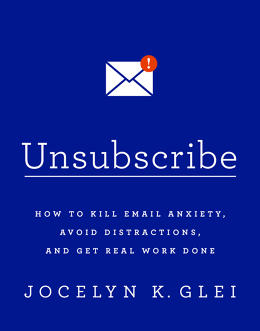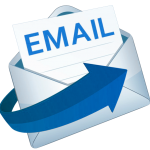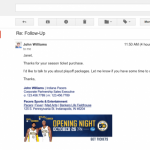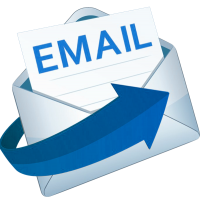Three Ways To Write Shorter, More Effective Emails
Inside each of us there’s a little efficiency guru who views every single email within a larger matrix of all the stuff we could be focusing on: the big deadline that needs to be met, the presentation that needs to be prepared, the client conflict that needs to be resolved, the errands that need to be run. I call this the “busy bias,” and it colors how much—or how little—attention we are willing to give any one interaction or piece of information.
When everyone is busy, a key part of getting people to pay attention is being respectful of their time. In the context of composing an email this means being clear, concise, and actionable. You can achieve this by sticking to a few simple strategies for structuring the information you need to communicate.
1. Lead With The Ask
Without being abrupt or pushy, it’s important to put your ask at the top of your email—within the first sentence or two if possible. The goal is to get the reader’s attention and have them understand the action that’s being requested immediately. If you put a lot of rigmarole before your ask, an impatient reader might never get to it. For example, let’s say you’re reaching out to the CEO of a startup you admire to invite her to speak at a conference. You could position the ask like so:
Hi Catherine—This is Mark Holland. I run the popular Firestarters conference, which draws over 5,000 entrepreneurs to the Staples Center in L.A. each year. I’m writing to extend an invitation for you to speak at our event on March 5, 2016.
Catherine may not know what the hell the Firestarters conference is yet, but she does know something important: What this email is about (a speaking invitation). She also now knows the date and location of the event and that it has fairly impressive attendance numbers. Now that the ask is clear and her interest is piqued, Mark can go on to give her some backstory on the event, share more impressive stats, and make his case even stronger.
In a short-attention span world, it’s best to get right to the point immediately and do your explaining later. Think about what will appear in the two-line message preview the recipient will see as she scrolls through her inbox: Will it capture her attention?
2. Establish Your Credibility
Why should I care? is the tacit question hovering in most people’s minds as they open an email, especially if it’s from someone they don’t know. This is why establishing your credibility early on in the message is crucial. Tell your reader why you are different, why you are accomplished, or why they should pay attention to you.
For instance, if you’re cold-emailing a brand to request a sponsorship, you might establish your credibility by sharing data points about your audience and the awards you’ve won.
Hi Tom—I’m Tracy Black, the editor of Feed Daily, a Webby award–winning website with over 2 million visitors a month. I’m putting together a new article series that targets ambitious young creatives, and I wanted to see if you might be interested in sponsoring it?
If you’re emailing someone you do know—getting in touch with a coworker about an urgent task, for example—you might legitimize your request by indicating that you are under pressure from the boss (assuming that’s true).
Hi Tom—I’m following up to see if you were able to implement the new email signup feature? The CEO wants to see this wrapped up by the end of the week.
But data points and brute authority aren’t your only options, of course. You can also establish credibility by being a keen observer of the person you are contacting: You could tell them how long you’ve followed their work, what you enjoyed about the last blog post they wrote, or how their product might be improved—with tact of course! As long as it’s not fawning, most people appreciate being noticed—and it makes them notice you back.

3. Make The Way Forward Clear
You’re much more likely to get a response from someone if it’s clear what the next step is. I frequently receive emails from people who are interested in some sort of knowledge exchange but never clarify how they would like for me to take action. Do they want to have a coffee? Do they want to do a phone call? It’s unclear, which means that instead of saying, “Yes!” I have to respond by asking them what they’re asking me for in the first place—or, more likely, not respond at all. By making the way forward clear, you make it easy for the recipient to say yes to your request.
Let’s say you’re reaching out to a film director you admire for advice. Don’t just email them with:
I’ve been a fan of your work for years, and I’d love to pick your brain. What do you say?
Instead, propose something specific:
I’m a longtime admirer of your work and have the greatest respect for your filmmaking expertise. I would love to ask you a few questions about how you financed your first film. Would you be game for a 15–20 minute phone call next week? My schedule is wide open all day Thursday and Friday if you have availability then. I promise to keep it brief.
The second example clarifies the subject matter at hand and the fact that you just want to do a brief phone call. This means that the recipient knows the time commitment will be minimal and—because you’ve already proposed a calendar date—they know that the email thread can be closed quickly and efficiently. In other words, you’ve respected their time, and they now know that dealing with you won’t be another headache they don’t need.
This article is excerpted from Unsubscribe: How to Kill Email Anxiety, Avoid Distractions, and Get Real Work Done by Jocelyn K. Glei. Copyright © 2016. Available from PublicAffairs, an imprint of Perseus Books, LLC, a subsidiary of Hachette Book Group, Inc. It is reprinted with permission.
Fast Company , Read Full Story
(35)














